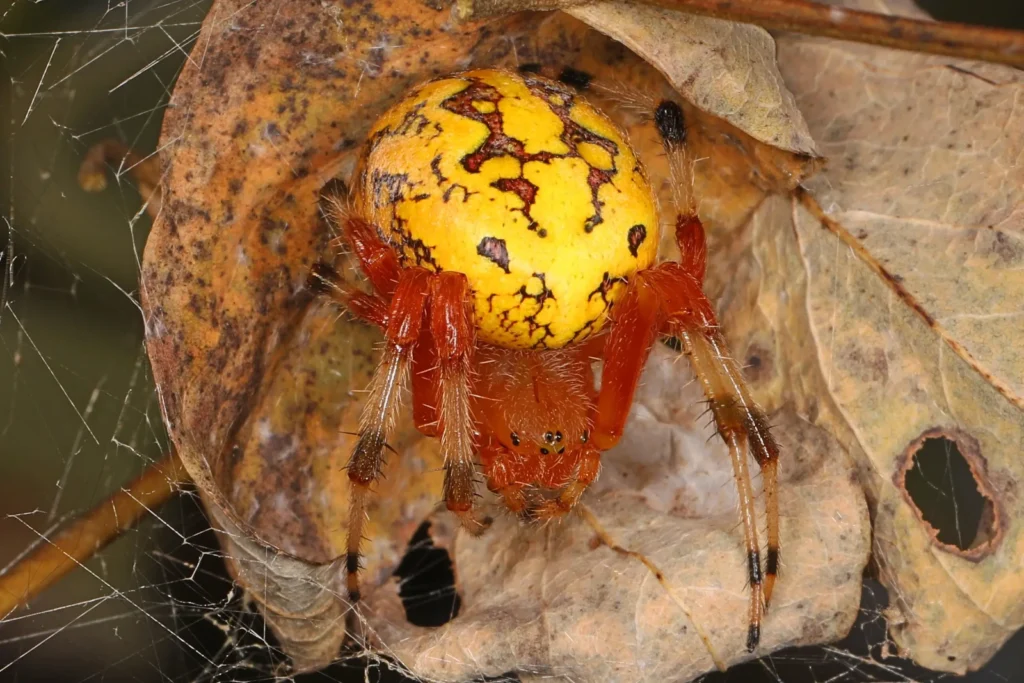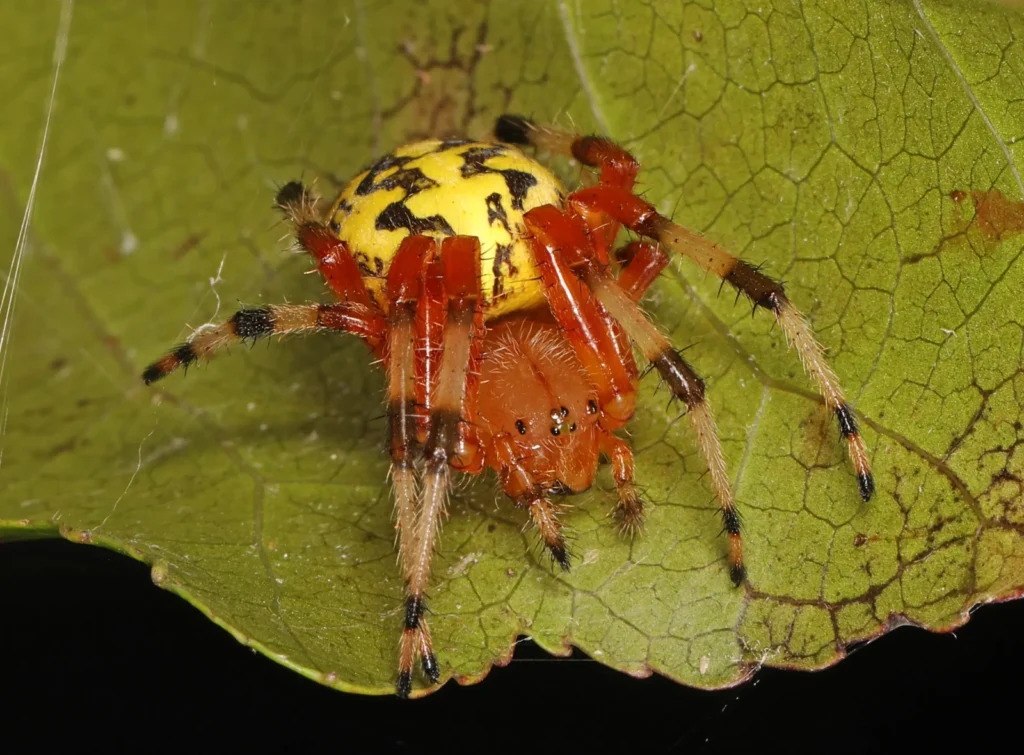Marble crosspiece (Araneus marmoreus)- this is one of the most beautiful representatives of cross spiders (Araneidae), which got its name due to the unique marble pattern on the abdomen. This species is distributed in many regions of the world and is an important component of ecosystems, helping to regulate the number of insects.
📌 Why is this spider interesting?
✔ Has unique marble color
✔ Non-aggressive and harmless to humans
✔ Creates large geometric meshes
✔ Important insect population regulator
✔ Common in Europe, North America and Asia
Let's take a closer look at the life and features of this extraordinary spider!

Scientific classification
✔ The Kingdom: Animals (Animalia)
✔ Type: Arthropods (Arthropoda)
✔ Class: Arachnids (Arachnida)
✔ Row: Pavuk (Araneae)
✔ Family: Roundworm spiders (Araneidae)
✔ Gender: Araneus
✔ View: Araneus marmoreus
📌 The name" marble " comes from the intricate pattern on the spider's abdomen, which resembles the texture of marble.
Appearance and dimensions
🕷 What does a marble crosspiece look like?
✔ Body size: 9-18 mm (females are larger than males)
✔ Paw span: up to 40 mm
✔ Color:
• From from yellow to brown, with marble patterns
* The abdomen often has white, orange, or brown-black spotting
✔ Paws: covered with short hairs, with dark rings
✔ Distinctive feature: bright "marble" pattern on the abdomen
📌 Males are smaller and have less distinct coloration, while females show wide color variation.
Distribution area
🌍 Where does krestovik marble live?
✔ Europe: it is found in forests, fields, and parks
✔ North America: it lives in temperate and humid areas
✔ Asia: it is found in steppes and forest areas
✔ Ukraine: common in forests, fields, and gardens
📌 The spider is found in various ecosystems, but prefers areas with high vegetation, where it can spin a web.
Lifestyle and behavior
🌿 How does the marble cross live?
✔ Leads a sedentary lifestyle - creates a permanent trap
✔ Active at night, hides in a shelter during the day
✔ Waiting for the victim in the center of the web
✔ Harmless to humans, even in the event of a bite
📌 Krestovik marble is not aggressive and rarely bites even in danger. If it is disturbed, it falls off the web or freezes.

Food
🍽 What does the marble cross eat?
✔ Small insects (flies, mosquitoes, butterflies)
✔ Beetles, grasshoppers
✔ Small spiders
✔ In rare cases-weakened bees
📌 The spider waits for prey in the center of the net, and when the victim gets entangled, it quickly runs up and injects venom, after which it wraps it in a web.
Web and hunting
🕸 How does a marble cross stitch weave a web?
✔ Creates the round web up to 50 cm in diameter
✔ Places a spider web between tree branches, grass or bushes
✔ Adhesive threads hold the prey until the spider attacks it
✔ At night repairs damaged areas of the web
📌 If the web is too worn out, the spider creates a new one, usually every 1-3 days.
Reproduction
❤️ How does the marble cross breed?
✔ Mating: in the fall
✔ Males often die after mating
✔ The female lays her eggs in a dense cocoon
✔ The larvae hatch in spring
📌 Young spiders first stick together, and then disperse in search of a place for a web.
Poison and danger to humans
🚨 Is the bite of the marble crosspiece dangerous?
✔ The poison is weak - harmless to humans
✔ Bite Symptoms:
* Slight redness
* Itching or mild pain
* Passes quickly without complications
📌 Even in the case of a bite, the consequences are minimal, so this spider does not pose a threat to humans.

Interesting facts
💡 Its pattern on the abdomen is unique for each individual!
💡 It is able to restore the web in just a few hours!
💡 The female can lay up to 1000 eggs in a cocoon!
💡 It has natural enemies-rider wasps that parasitize it!
Conclusion
🕷 Krestovik marble is an extremely beautiful spider that plays an important role in nature. It helps to control the number of insects and decorates our gardens with its artful spider webs. Despite its formidable appearance, this spider is absolutely harmless to humans.
🌿 Watching it is a real pleasure for nature lovers, because its pattern, lifestyle and netting is a real art created by nature!